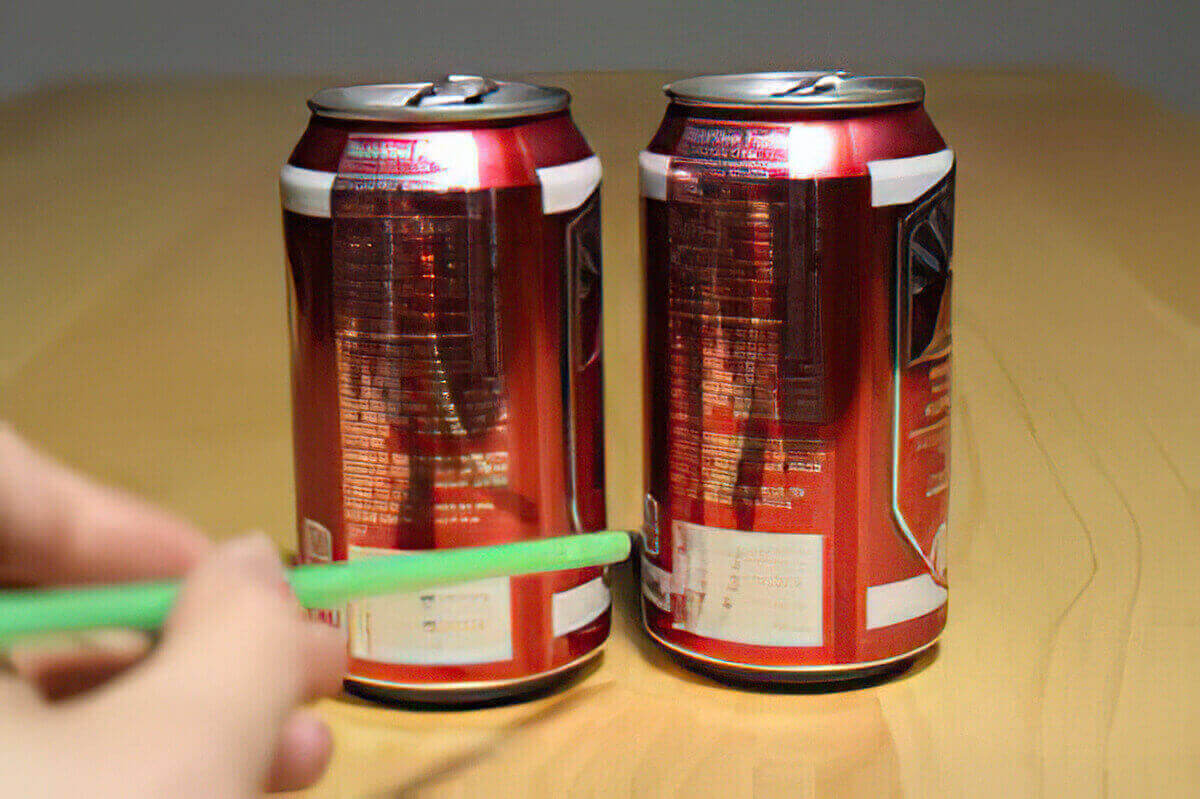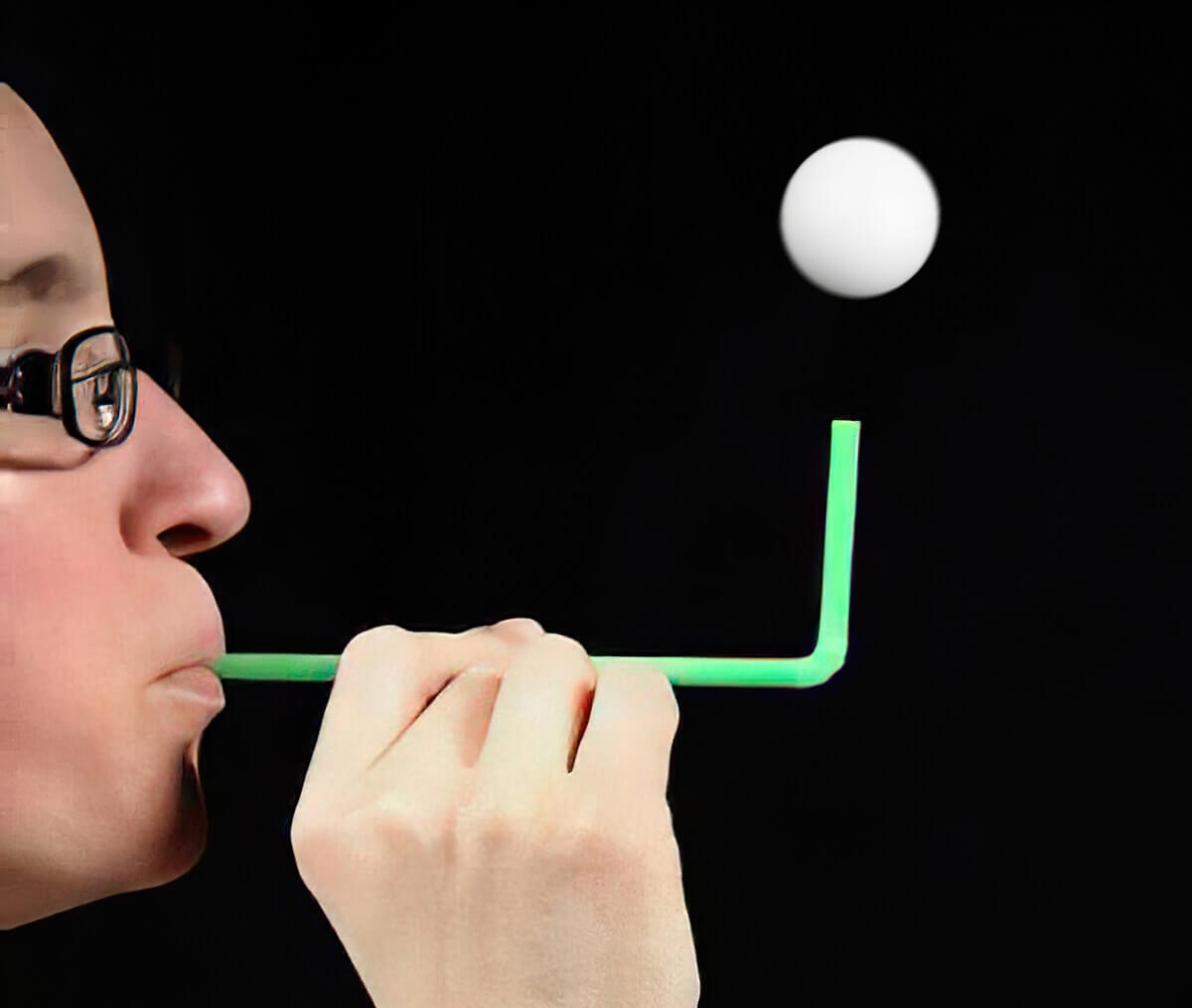Bernoulli’s principle for kids: let’s try to explain this fascinating fluid dynamics effect (often used to explain lift, the force that allows airplanes to fly) in a simple way and with a few fun experiments at the end of the article.
This principle is named after Daniel Bernoulli. A prominent figure who’s known for his tremendous works in physics and mathematics, published in his book Hydrodynamica in 1738. This book comprises of several studies surrounding the way fluids behave when they’re in motion.
For starters, air and water both share some common characteristics, namely, that they’re both fluids. However, the disparity remains in water being in a liquid state and air being gaseous. Moreover, the defining aspects of a fluid mean the substance can flow and take on different shapes.
So in this context, Bernoulli explains that when a fluid moves faster, it generates less pressure. On the other hand, when fluid goes slower, it produces greater pressure. So the increase in speed happens simultaneously as the decrease in static pressure or fluid’s potential energy and vice versa.
Although Bernoulli is the one to have deduced the concept, it wasn’t until 1752 that Euler derived the actual equation. With that said, Bernoulli’s principle only applies when factors like turbulence and heat radiation are small and can be neglected.
Bernoulli’s Principle: Common Misconceptions
Bernoulli’s principle is often explained to kids (and students in general) using false examples and misleading demonstrations. In fact, one of the most common experiments that are blatantly incorrect is the one involving a piece of paper, which usually goes as follows:
- the student holds a piece of paper in a horizontal manner
- next, the student positions the paper so that it droops downwards
- then blows over its top
- as they keep blowing, the piece of paper rises
So the instructor comes to the conclusion that when “air moves faster, it has a lower pressure and generates lift”.
But you can prove this experiment wrong in a simple way. Start by showing students that they’ll get the same result (the paper moves upward) if they blow along the bottom of the paper. If the deflection is only due to speed, the paper would have to move downward in this case.
However, the piece of paper rises regardless where you blow (along the top or the bottom). In addition to that, the air leaving the student’s mouth has the same static pressure as that surrounding them. This means it doesn’t have lower pressure just because it’s moving. Moreover, relating the flow on both sides of the paper is wrong.
This is primarily because the air above and below pertains to two different flow fields. So it is completely misleading to apply Bernoulli’s principle (which only applies to one flow field) to this example and using it as a proof of lift.
Generation of Lift: Misunderstandings and Simplified Explanations
To maintain a plane in the air during steady and level flight, a force to support its weight is needed. This upwards force that maintains the aircraft suspended is called lift. With that said, there are many contradictory theories and misunderstandings surrounding the generation of lift and how it works.
Many still believe that lift in airplanes is only due to a particular shape of the cross section of the wing (called airfoil), which causes air to travel a longer distance on the top of the wing compared to the bottom, creating a difference in pressure (lower on the top of the wing, higher on the bottom, as stated by Bernoulli’s principle), which then pushes the airplane upward.
Despite being true that air moves faster on the top of an airfoil, compared to the bottom, using only Bernoulli’s principle to explain lift is incomplete and only partially correct (otherwise fighter jets would not be able to fly upside down).
Another only partially correct explanation of lift involves Newton’s third law of motion and it states that the airfoil generates lift by exerting a downward force on the air, so the air exerts an equal and opposite force upward, lifting the airplane.
Both Bernoulli’s principle and Newton’s third law of motion are considered simplified explanations of lift and a more comprehensive physical explanation of lift requires both of them.
How to Accurately Explain Bernoulli’s Principle to Kids?
Explaining Bernoulli’s principle to kids can seem a bit challenging. Especially considering how many misconceptions and common inaccuracies circulate around this concept.
However, you can still make such a confusing notion much more manageable for kids. For starters, definitely explain the changes in static pressure and how it acts in all directions, not just downwards. Then through the scientific method, kids can observe how changes in speed determine how much pressure’s present in the air.
Then they can relate this conclusion to Bernoulli’s principle. The best way to explain this in a clear and concise way is through live experiments and activities. Accordingly, we will mention a few of those below to further illustrate Bernoulli’s principle for kids.
Bernoulli’s Principle: Fun Activities for Kids
There are many ways you can explain Bernoulli’s principle to kids, but experiments work best. You can find many interesting experiments in this Bernoulli’s principle PDF by NASA (part of NASA’s “Museum in a Box” program that teaches the physical sciences of flight). We will try to illustrate the two activities we liked the most and you should also try them, they’re fun and easy to replicate!
Magical Soda Cans – Experiment #1
For this experiment, you will need two empty soda cans (of the same size), one straight drinking straw, and one ruler. Start by putting the soda cans side by side with ¾ inch space in between. Choose a flat surface like a table or a desk. Then take the straw, place it in that space in the middle, about ¼ inch above the surface. Next, blow between the two cans and observe what happens.
Expected outcome
When done correctly, the two cans will move together. The main reason behind this is that the air moving through the straw will be faster moving. While the air on any side of the cans won’t. So according to Bernoulli’s principle, air with high speed exerts less pressure. In the end, the cans are drawn towards one another.

Levitating Ping-Pong Ball – Experiment #2
For this Bernoulli’s principle for kids activity, you will need one flexible drinking straw and a ping-pong ball. To start, bend your straw into an “L” then place the long end of the straw in your mouth, with the short end pointing upwards. Take a deep breath and blow steadily through the straw while trying to balance the ping-pong ball in the stream of air coming out of the end of the straw. Observe what happens.
Expected outcome
When done correctly, the ping-pong ball will levitate and balance itself in the steady stream of air. This happens because the air coming out of the straw is moving faster (so it has less pressure) than the still air around the ball. If the ping-pong ball tries to escape the air stream, it experiences pressure from the still air around it, which pushes it back in place, keeping it levitating.


